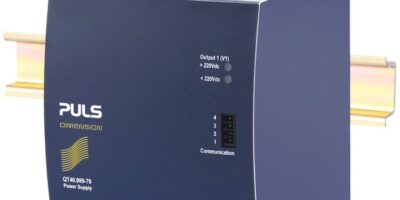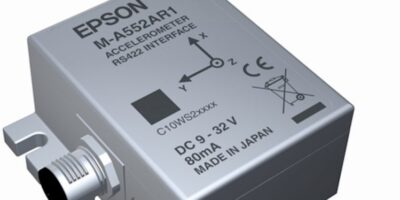DIN rail power supplies provide data supplied via a proprietary IO-Link port are the first step to providing system designers real time information on power, temperature and status, for industry 4.0.
The Dimension QT40.241-B2 from Puls Power is believed to be the first three-phase DIN rail power supply (24V / 40A) available, making this system data available to users via an I/O port.
“A power supply is situated at a central nodal point in any system, “comments Marco van der Linden, UK Country manager for Puls.” There is more than just output current flowing, a power supply can be used to record a significant amount of real-time information that is of particular interest to the end user as well as the system manufacturer.”
This data can help increase system availability and reduce maintenance and operating costs. An IO-Link connected power supply has the potential to also act as a sensor node for the industrial IoT (IIoT).
The QT40.241-B2 include three-phase, 960W, 24V at 40A, 95.3 per cent efficiency, +50 per cent BonusPower for five seconds, 100A for 10 milliseconds to trip circuit breakers, active power factor correction (PFC or harmonic correction) and full power over the temperature range -25 and +60 degrees C in just a 110mm wide DIN-Rail enclosure.
The Puls IO-Link v1.1 (IEC 61131-9) networking function features a four-pole M12 plug connector, transmission speed: COM 3, (up to 230.4kBaud) and integrated non-volatile memory.
Typical applications include, industrial and process control, building automation, panel-building, test and measurement, instrumentation and communications systems. Versions are available approved for railway systems and ruggedised for harsh environments.
Puls focuses entirely on the development and production of DIN rail power supplies.







